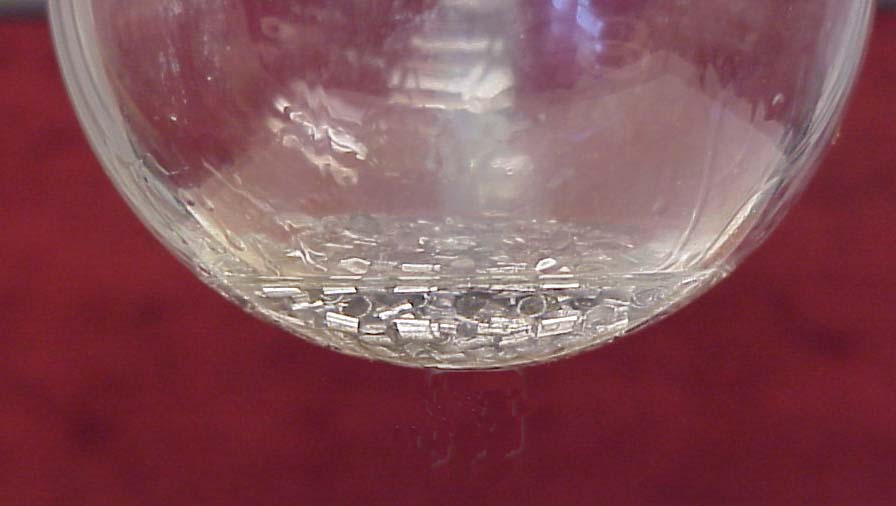At this point the reaction mixture should be heated.
It is advisable to scratch or crush the Mg-turnings before placing them in the flask in order to have a fresh (=more reactive) surface.

At this point the reaction continue gentle heating. (Though not common, if the reaction starts boiling too vigorously or out of control, then place in ice bath).
At this point the reaction mixture is clearly going on its on and should not be supplemented with heat. Start slowly dripping in the remaining bromobenzene solution while maintaining a gentle reflux.
When all of the bromobenzene solution has been added, then the reaction mixture should be supplemented with heat allowing for a gentle reflux. Ideally, most of the magnesium turnings will dissolve throughout the reaction. In some cases, the solution looks light brown, in other cases dark brown, often depending how fast the etheral bromobenzene solution was added.